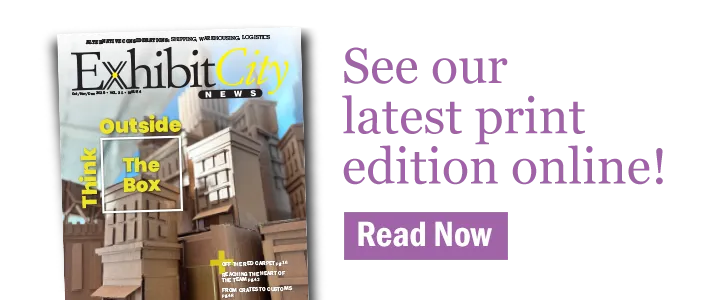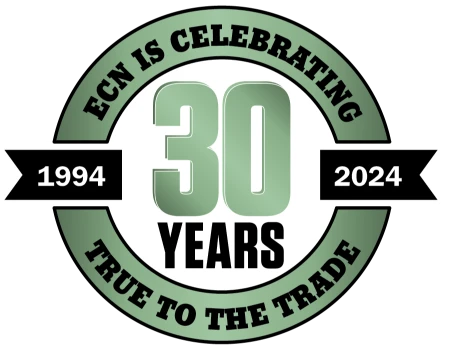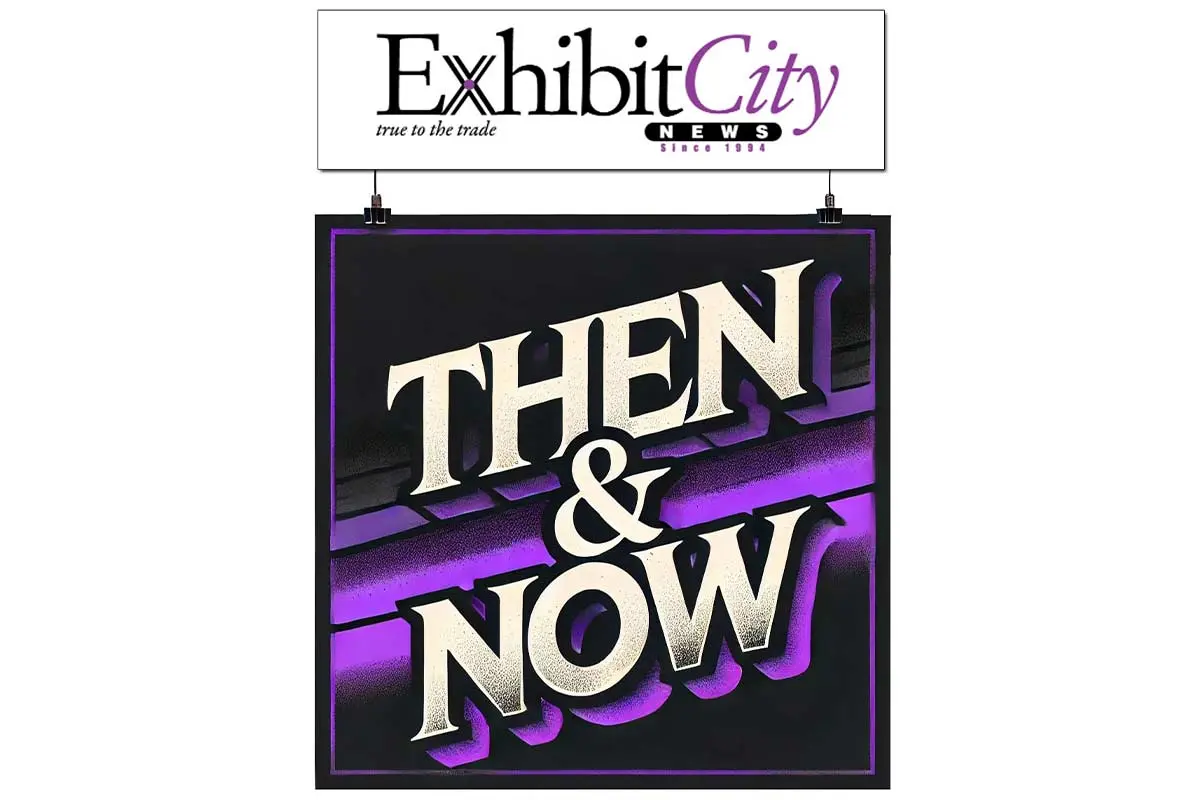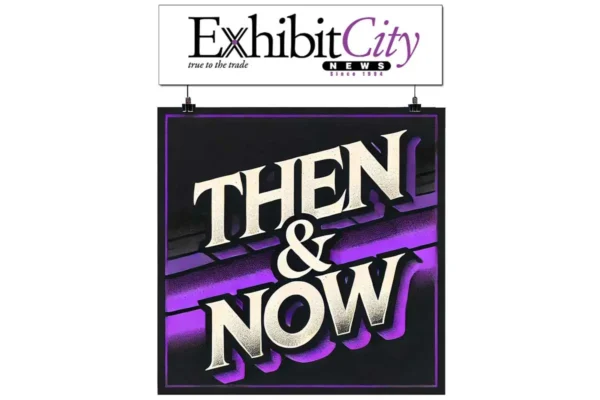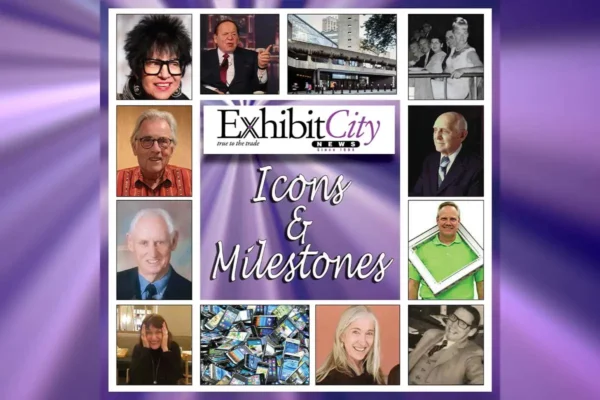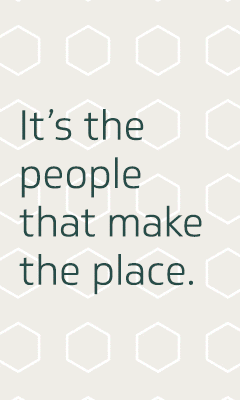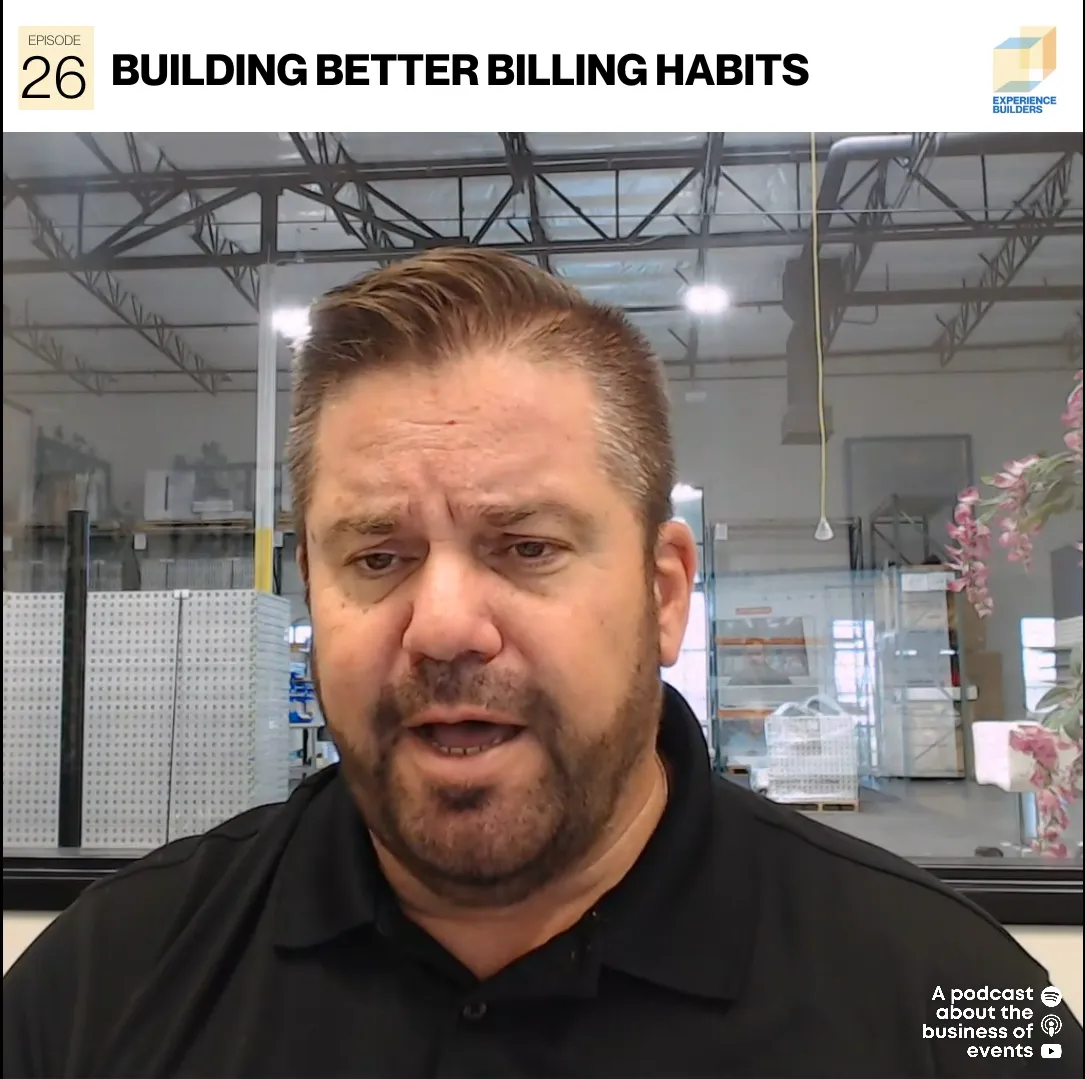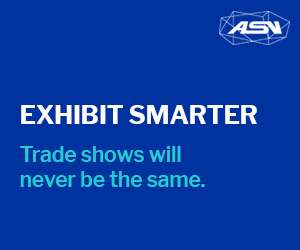About the Then & Now Content Series
The Then & Now series written by Kerstan Szczepanski was originally published in the Exhibit City News 30 Year Anniversary book. The series is a collection of aspects of the show floor that have changed over the last 30 years. The content covers an overview of the last 30 years and is not intended to be an insight into every change, but a broad overview. Many things have changed over the last 30 years and will continue to change.
To see the original layout of this article, please visit page 158 of the 30 Year Anniversary book.
Flooring into Focus
The evolution of tradeshow flooring since 1994 reflects broader industry trends, including technological advancement, sustainability, and enhanced visitor experience. Flooring, once an afterthought, has become a key element in creating immersive and branded environments for attendees.
The ‘90s: Basic and Functional
In the mid-1990s, tradeshow flooring was predominantly functional, with carpet tiles and rolled carpets as the standard. These options provided exhibitors with a uniform look, were relatively easy to install, and offered some comfort underfoot—a simple yet effective solution for booth design.
Tradeshow carpets typically featured solid colors or simple patterns, with exhibitors sometimes opting for custom hues or logos to reinforce brand identity. Flooring choices were straightforward, but they were instrumental in conveying a brand’s aesthetic with basic color and logo customizations.
The 2000s: Innovation and Customization
The early 2000s saw the rise of interlocking floor systems made from materials such as wood, vinyl, plastic, and rubber. These modular floors were durable, portable, and allowed exhibitors to experiment with new colors, textures, and patterns. The ease of assembly and disassembly made them a favorite among exhibitors, who could create unique booth designs quickly and efficiently.
With advances in printing technology, custom designs became increasingly popular, enabling detailed graphics directly on flooring. Branding options expanded, and booths could feature highly customized themes that supported the overall visual experience for attendees.
Modular carpeting gained popularity in this era, allowing exhibitors to mix and match tiles to create distinctive, brand-aligned patterns. The modularity provided flexibility, enabling different configurations across multiple events.
The 2010s: Sustainability and Comfort
Growing awareness around sustainability influenced flooring choices, with recycled and biodegradable options becoming more common. Materials like recycled PET bottles were repurposed into carpets, and low-VOC flooring options became popular to minimize environmental impact.
Exhibitors began incorporating ergonomic features into flooring to improve comfort for attendees and staff. Anti-fatigue mats and cushioned underlays helped alleviate discomfort from long hours of standing, a welcomed feature in bustling tradeshow environments.
A new trend emerged with the integration of technology directly into flooring. LED floor tiles and interactive floor panels added dynamic elements to booths, enabling exhibitors to captivate attendees with light displays or interactive surfaces that responded to movement.
2020s: Versatility and Enhanced Experiences
The COVID-19 pandemic led to a shift toward virtual and hybrid events. Flooring adapted to create studio-like settings for live streaming, with a focus on professional aesthetics for virtual audiences. Flooring became a key part of designing visually appealing and versatile spaces for both in-person and virtual interactions.
Flooring continued to evolve with materials allowing for detailed customization—textured surfaces, metallic finishes, and high-definition printed graphics created memorable, immersive experiences. Flooring choices increasingly aligned with the visual storytelling of the booth, drawing attendees into the brand experience.
Sustainability remains a major trend, with a preference for reusable, recyclable, and low-VOC flooring options. Many exhibitors now choose flooring they can reuse across multiple events, minimizing waste and reducing environmental impact.
The latest innovations include interactive flooring that responds to foot traffic and sensory elements that heighten the tactile experience, like flooring designed to mimic walking on water or clouds. Such effects engage visitors without overshadowing the product display, adding an exciting, memorable dimension to the booth experience.
Future Trends
The future of tradeshow flooring is likely to see smart technology integration, such as sensors that collect data on foot traffic and engagement. These insights can help exhibitors understand visitor flow, allowing for better booth design and enhanced attendee experiences.
Advancements in material science are expected to produce even lighter, more portable flooring options, making transport and setup easier than ever.
The evolution of tradeshow flooring demonstrates the industry’s shift from utilitarian surfaces to branded, immersive environments that enhance attendee experiences. Flooring now plays a significant role in booth design, driven by advancements in technology, sustainability, and the need for engaging, memorable experiences.



